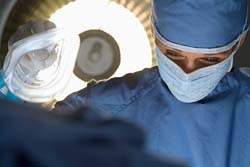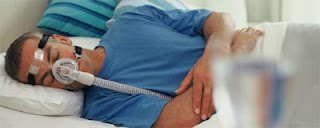 I couldn't resist. This afternoon I go down to our local movie theater, and view Michael Moore's new documentary, Sicko – which is about our nation's broken health-care funding system – on the film's opening day.
I couldn't resist. This afternoon I go down to our local movie theater, and view Michael Moore's new documentary, Sicko – which is about our nation's broken health-care funding system – on the film's opening day.I generally avoid movies on opening day. I don't like crowds. But, I'm so passionately concerned with the subject matter of this film, I don't want to wait.
Evidently, lots of other people feel the same way. The theater is two-thirds filled, at 3:15 in the afternoon on a Friday – for a documentary, for crying out loud! This is also the first movie screening I've been to, for a very long time, in which the audience actually applauds at key points in the film. (Biggest applause line: British Labour Party elder statesman Tony Benn – comparing America's bloated military budget with our paltry health-care expenditures – "If you can find money to kill people, you can find money to help people.")
I'll admit that Michael Moore's films are often over the top. He's not averse to taking the occasional cheap shot at his opponents, for comic effect. Sure, there are a few of these low blows in Sicko, but by and large he just lets the ordinary Americans he interviews speak for themselves. They speak powerfully indeed.
 Moore asks, over and over, some very basic questions about why we do things the way we do, in this country. Why, for example, do we permit doctors who review medical-insurance claims to be paid literally millions in bonuses for denying people medical care? Why does the law require insurance companies to value their fiduciary responsibility to their stockholders more highly than their responsibility to their policyholders? Why do we, as a nation, consider it efficient for the government to run our firehouses, but not our hospitals? How is it moral to allow private companies to waste 14 cents of every health-care dollar on paper-shuffling bureaucratic overhead for people under 65, when Medicare does the same job for seniors, for just 3 cents? Why is it that, of the 25 leading industrialized nations, 24 of them offer their citizens universal health care (guess which one doesn't)?
Moore asks, over and over, some very basic questions about why we do things the way we do, in this country. Why, for example, do we permit doctors who review medical-insurance claims to be paid literally millions in bonuses for denying people medical care? Why does the law require insurance companies to value their fiduciary responsibility to their stockholders more highly than their responsibility to their policyholders? Why do we, as a nation, consider it efficient for the government to run our firehouses, but not our hospitals? How is it moral to allow private companies to waste 14 cents of every health-care dollar on paper-shuffling bureaucratic overhead for people under 65, when Medicare does the same job for seniors, for just 3 cents? Why is it that, of the 25 leading industrialized nations, 24 of them offer their citizens universal health care (guess which one doesn't)? Central to the film is a risky publicity stunt Moore engaged in: taking several ailing 9/11 heroes to Cuba by boat. First stop: the waters outside Guantanamo Bay, where Moore calls out through a bullhorn, asking the guards if his passengers can receive the same medical care the Al Qaeda inmates are getting from our government, gratis (which is significantly better care than these uninsured or underinsured people get on the U.S. mainland). Next stop: a Cuban hospital, in which these disabled rescue workers receive pulmonary treatment free of charge – care they were unable to get in the U.S., because they weren't New York City employees, but rather, patriotic volunteers. Having been to Cuba, I can appreciate what Moore's trying to do, but he failed to mention one important detail: that ordinary Cubans must suffer every day through a dreadful shortage of medicines. Yes, they have excellent doctors, but the Cubans have nowhere to take the prescription scripts their doctors write for them, because the pharmacy shelves are typically bare. (The U.S. trade embargo is partially to blame for that, and Cuban government inefficiency for the rest.) Yet, for all that, Moore's absolutely right in pointing out that the life expectancy of U.S. and Cuban citizens is about the same, and the Cuban infant mortality rate is actually lower.
Central to the film is a risky publicity stunt Moore engaged in: taking several ailing 9/11 heroes to Cuba by boat. First stop: the waters outside Guantanamo Bay, where Moore calls out through a bullhorn, asking the guards if his passengers can receive the same medical care the Al Qaeda inmates are getting from our government, gratis (which is significantly better care than these uninsured or underinsured people get on the U.S. mainland). Next stop: a Cuban hospital, in which these disabled rescue workers receive pulmonary treatment free of charge – care they were unable to get in the U.S., because they weren't New York City employees, but rather, patriotic volunteers. Having been to Cuba, I can appreciate what Moore's trying to do, but he failed to mention one important detail: that ordinary Cubans must suffer every day through a dreadful shortage of medicines. Yes, they have excellent doctors, but the Cubans have nowhere to take the prescription scripts their doctors write for them, because the pharmacy shelves are typically bare. (The U.S. trade embargo is partially to blame for that, and Cuban government inefficiency for the rest.) Yet, for all that, Moore's absolutely right in pointing out that the life expectancy of U.S. and Cuban citizens is about the same, and the Cuban infant mortality rate is actually lower. In France, Moore interviews a group of American expatriates who have nothing but good things to say about the French government medical benefits they receive, free of charge. These Americans abroad sheepishly confess to feeling guilty that they have so much less to worry about, medically, than their family members back home.
In France, Moore interviews a group of American expatriates who have nothing but good things to say about the French government medical benefits they receive, free of charge. These Americans abroad sheepishly confess to feeling guilty that they have so much less to worry about, medically, than their family members back home.In Canada, he takes his camera into a government health-clinic waiting room, and asks the ordinary people sitting there if they can confirm all the bad things he's heard about unreasonable waiting times and inferior care. None of that's true, the Canadians tell him, matter-of-factly. Their system works, and they're proud of it.
There's much more I could say about the film – a little of it negative, but the vast preponderance of it positive. Go see it, with an open mind. Listen to the stories of ordinary people, whose lives have been ruined – and who, in some cases, have lost loved ones – due to medical-insurance profiteering. Then, as Moore himself does in the film, ask the really tough question: which system – universal health care, or private insurance – is more moral?
 Go see Sicko. It just could be the most important movie you see this year.
Go see Sicko. It just could be the most important movie you see this year.

























